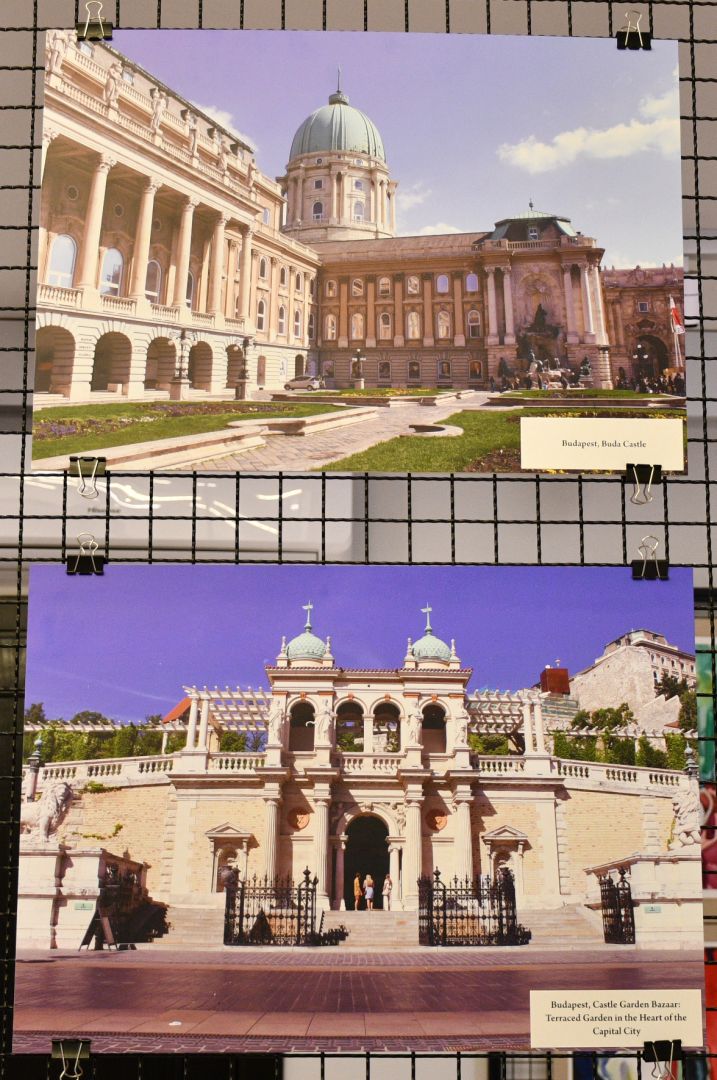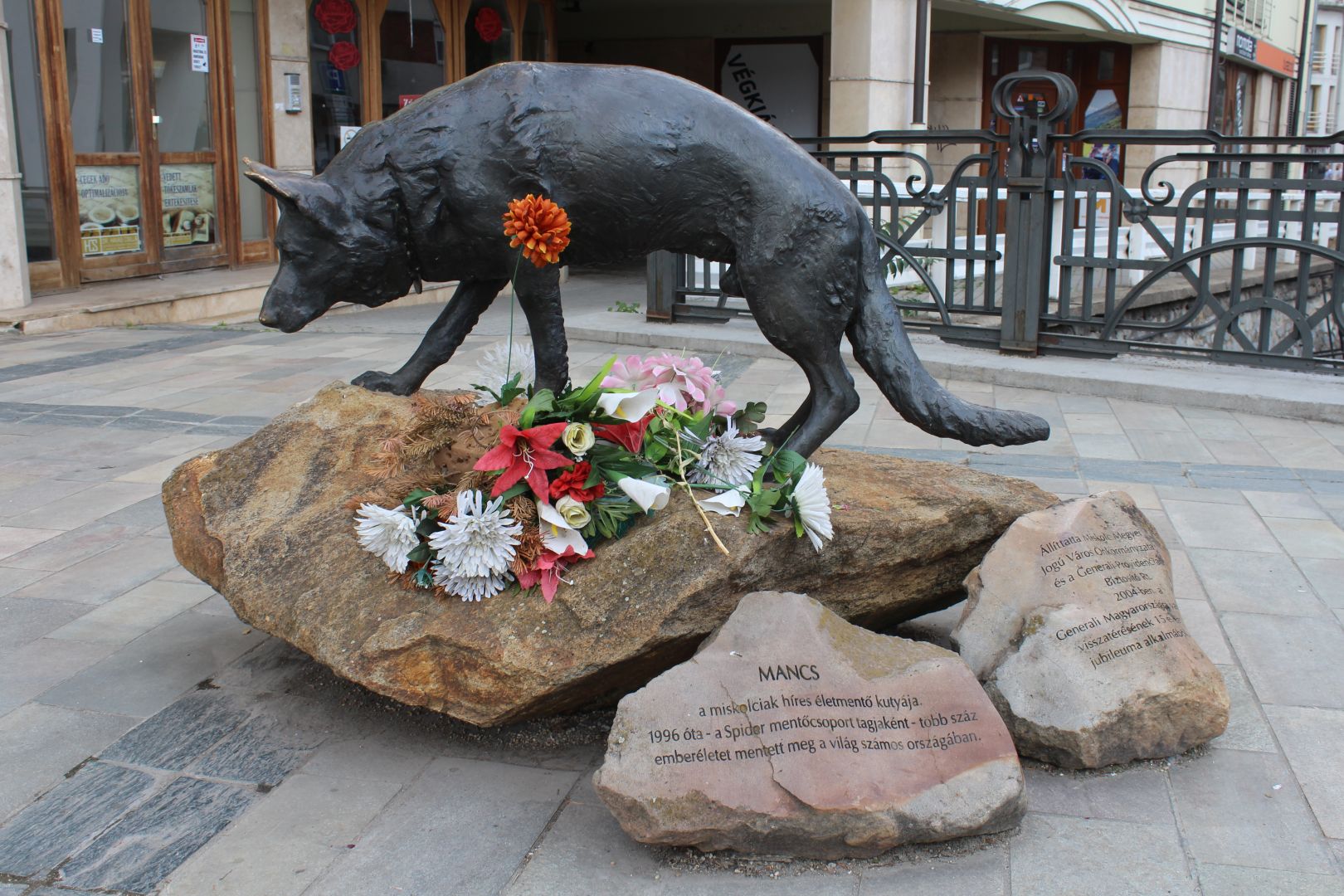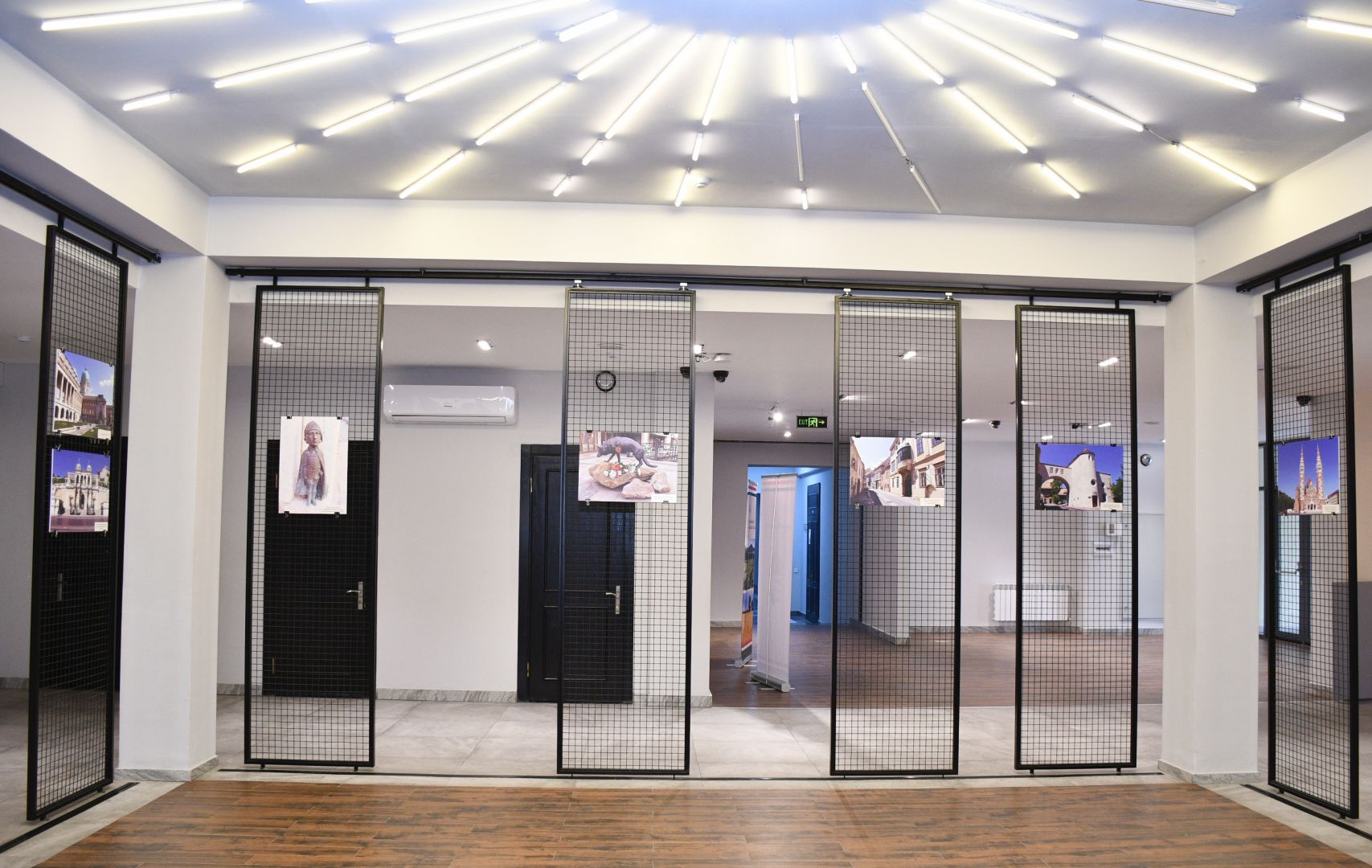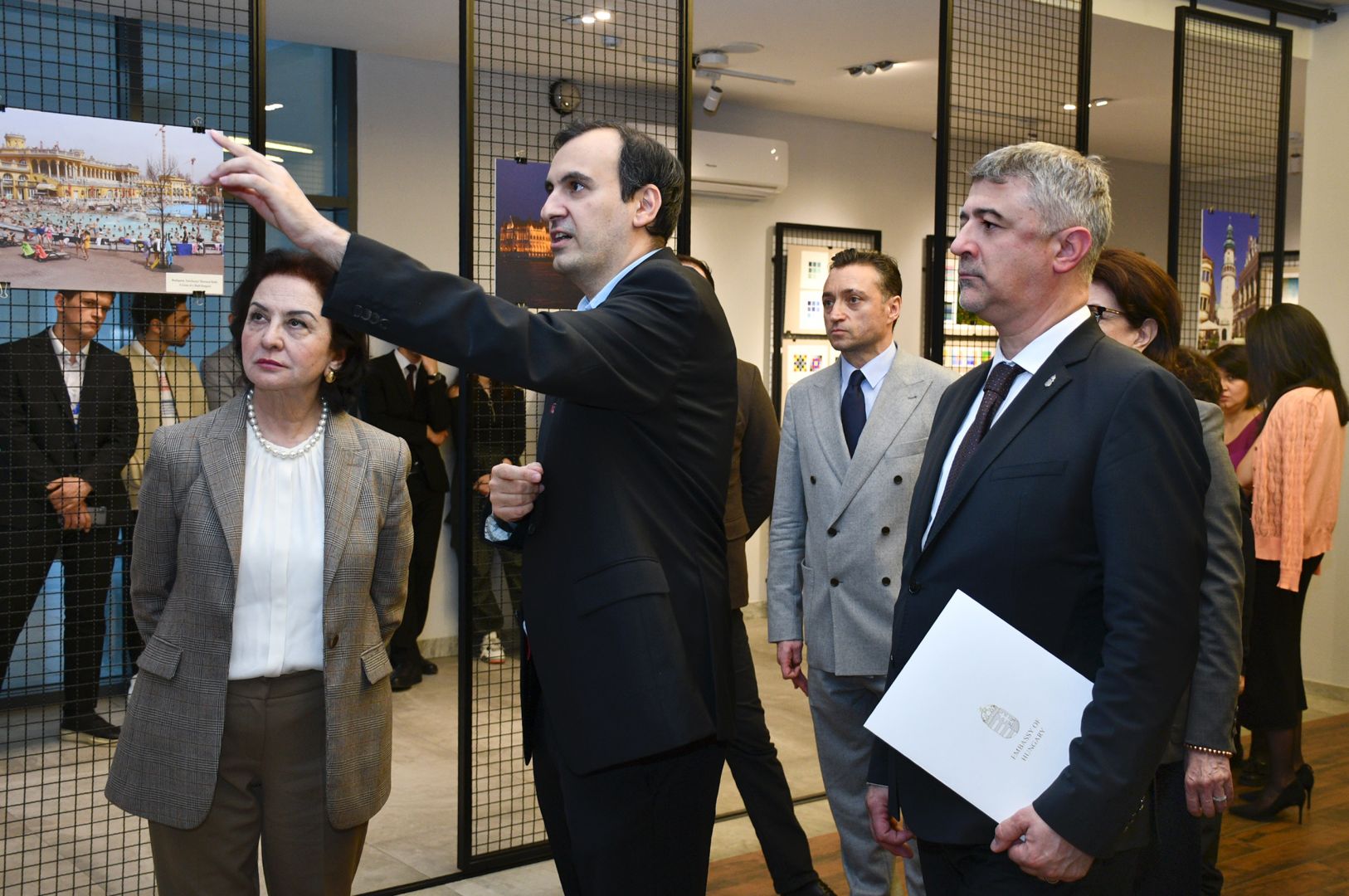Azerbaijani photographer enchanted by Hungarian centuries-old architecture [PHOTOS]
![Azerbaijani photographer enchanted by Hungarian centuries-old architecture [PHOTOS]](https://www.azernews.az/media/2023/04/14/fisherman_bastion_monuments_budapest.jpg)
Mirroring the centuries-old culture and history, Hungarian architecture is a joy for the eyes of photographers and history buffs. The country is filled with ancient cathedrals, majestic castles and other architectural wonders.
Through his photographs, Aydin Sadikhov demonstrates one of the most iconic sites for those who want to steep themselves into Hungarian history and architecture.
For Azerbaijani photographers, Hungary has served as a source of profound inspiration since 2018.
"I visited Hungary for the first time in 2018. During my first trips, I managed to see and capture on camera the beauty of the architectural masterpieces in Budapest. At the end of that year, I went on my second trip to Hungary for a new experience. This time, I visited other Hungarian cities to learn more about the country, its history, culture and traditions. Furthermore, I was able to get acquainted in detail with more than 12 most interesting cities. Each city in Hungary fascinates with its incredible historical and architectural masterpieces. After my acquaintance with this amazingly beautiful country, I decided to share my experience through his photographs. Since 2018, I have presented nine photo exhibitions dedicated to Hungary," the photographer told Azernews.
His new photo exhibition dedicated to Hungary opened its doors at Azerbaijani University of Architecture and Construction as part of the project "Architectural Masterpieces of the World", launched by Italy-Azerbaijan Design Center and acclaimed photographer, art-curator Aydin Sadikhov last year.
The project features separate events including photo exhibitions and presentations on the architectural masterpieces of different countries, including Slovakia, the Czech Republic, Poland, Mexico.
The fifth exhibition held within the project was devoted to the Hungarian historical and architectural legacy.
Around 20 magnificent photographs were showcased as part of the exhibition, organized by the Hungarian Embassy in Azerbaijan.
The photo provides a unique opportunity to plunge into the wonderful world of historical and architectural masterpieces of the Hungarian cities like Budapest, Veszprem, Szeged, Sopron, Miskolc and the historical Hungarian village of Hollokö.
Rector of the University of Architecture and Construction, professor Gulchohra Mammadova, the Hungarian Ambassador to Azerbaijan Tamás Jozsef Torma, director of the Italy-Azerbaijan Design Center Farid Karimov and the project curator, photographer and traveler Aydin Sadikhov welcomed the guests of the exhibition opening.
In his speech, Aydin Sadikhov noted that the project "Architectural Masterpieces of the World" promises many surprises. One of them is an invitation from the Hungarian Embassy and participation in the event as a lecturer, the well- known curator of the Hungarian Museum of Architecture and Monument Protection Documentation Center, Ms. Eszter Baldavari.
The photo exposition was also full of interesting and unexpected moments. For the first time in Azerbaijan, the architecture of the Hungarian village of Hollokö, included in the UNESCO World Heritage List, as well as the city of Veszprem, were showcased as part of the photo exhibition.
The history and architecture of Hungary and Azerbaijan take a special place in Aydin Sadikhov's photography and cultural curator career. For several years, the photographer has successfully presented the historical sights and cultural features of Hungary through the photo exhibitions in Baku, and the historical and cultural heritage of Azerbaijan in Budapest.
As a result, the photographer was awarded the Hungarian state award Bronze Cross of Merit in 2020 for the development of Hungarian-Azerbaijani Cultural Relations.
It is important to note that 2023 is a special and even anniversary year for the cultural history of Hungary. 200 years ago, more precisely in 1823, the famous Hungarian poet and politician Ferenc Kölcsey wrote the text of the national anthem of Hungary. As a result, the date of completion of writing the manuscript of the national anthem, January 22, became officially the Day of Culture in Hungary, which is celebrated annually in this country.
However, there is also another important event of 2023 for the culture of Hungary. Veszprem, one of the oldest Hungarian cities, has been officially recognized as the Cultural Capital of Europe 2023. The city was founded during the reign of the Hungarian king St. Stephen, where later the king and his wife Gisela established one of the first episcopate in Hungary. The bishops of Veszprem received the right to crown the Hungarian queens, that is why the city later became known as the "City of Queens". Almost all the queens of Hungary received their crowns from the hands of the bishops of Veszprem, starting with Gisela, the wife of St. Stephen, to Zita Bourbon-Parma, the last queen of Hungary. Veszprem has a large number of interesting historical and architectural sights that allow us to explore different periods of Hungarian history.
The main architectural features of this ancient Hungarian city were shown in Azerbaijan for the first time.
Located in the center of Europe, Hungary is considered as a country of historical and architectural open-air museums. Here we can see how harmoniously it combines architectural monuments of different historical times, such as architectural monuments of the period of the Roman Empire, magnificent temples and fortresses of the Middle Ages, as well as architectural monuments with national Hungarian architectural features.
Budapest is the capital of Hungary and one of the most beautiful cities in Europe, with a rich historical, architectural and cultural heritage. This is the largest city in the country, which is often called the "Pearl of the Danube". Budapest is full of magnificent sights and monuments, museums and theaters, as well as a thermal spa. Budapest is an exciting combination of ancient history and rich culture, elegant architecture and the dynamics of a modern metropolis. Modern Budapest was formed as a result of the union of the neighboring cities of Buda and Pest. The flat east coast is Pest, always active, full of museums, architectural monuments and the magnificent parliament building.
The hilly, western coast is Buda, very quiet, with a cobbled medieval quarter, Royal Palace and the most beautiful church of St. Matthias. The historical center of Budapest is included into UNESCO World Heritage List and is known for its historical sites, including monuments, architecture, parks, museums and ancient castles. The most famous symbol of the capital of Hungary is the building of the Hungarian Parliament - one of the most impressive neo-Gothic buildings in the World. The building of the Hungarian Parliament is considered one of the most famous and beautiful buildings in Europe, shocking with its incredible architecture and huge size.
The building of the Hungarian Parliament is included in the list of UNESCO World Heritage Sites and is the largest building in Hungary. Several architectural styles are organically intertwined in its architecture. The interior decoration of the Parliament building is mainly made in the Baroque style, the facade is neo-Gothic, and the ceilings have features of Renaissance architecture. The Szechenyi Chain Bridge was the first permanent stone bridge connecting Pest and Buda, one of the most picturesque sights in Budapest, as well as the most famous bridge in the Hungarian capital. The construction of the bridge was proposed by Count István Szechenyi, so the building bears his name in the title. The famous Thermal Baths in Budapest are also named after Count Szechenyi. This is a complex of thermal baths, which is the largest in continental Europe. The baths are housed in a beautiful neo-baroque palace. Thermal baths include pools of different temperatures, the water to which is supplied from natural thermal springs. According to historical references, the thermal springs in Budapest were discovered and used by the ancient Romans.
After opening ceremony, Aydin Sadikhov together with the representatives of the Hungarian Embassy briefed the exhibition visitors about his photographs, historical sites in Hungary and legends around them.
During a short tour through the works, the photographer noted that he exhibits for the first his new photo works of the city of Veszprem, Bori Castle, Gödöllö Palace and the village of Hollokö.
Hollokö is a settlement of northern Hungary, in the region of Nograd, which has been a UNESCO World Heritage Site since 1987. This small village attracts tourists from all over the world, as it is the only settlement in Hungary whose inhabitants use the artificial and natural environment in the same way as they did at the beginning of the 20th century. The people of Hollokö carefully protect the ancient customs, traditions and dress in colorful folk clothes. H
Hollokö is an open-air museum, but the museum is quite unusual, as the villagers are living and working their daily lives in front of the visitors and tourists.
The village consists of only one street, so most of the houses face the main street. The history of Hollokö began in the 13th century, when a fortress was built on a hill and later a settlement appeared around it. There is also an interesting and ancient legend about the fortress, with the crows and the name of the village. The author of the works told in detail to the visitors an interesting story about the amazingly beautiful Bori Castle presented at the exhibition, which is also called the“Castle of Eternal Love. Externally, Bori Castle looks like a knight's castle with turrets, donjons and covered galleries. There is a beautiful terrace in front of the castle with trimmed shrubs, colorful flowers and amazing statues.
The castle is very beautiful, unusual and definitely unique. The most amazing thing is the fact that this grandiose building was actually built by one person. Jenő Bori was a talented sculptor, architect and builder, who created the main masterpiece of his life during 40 years of construction works with a break during the World War. Jenő Bori dedicated the main architectural masterpiece of his life to the great power of love to his wife Ilona, who became his main muse.
Almost everything in this castle is filled with the image of this woman and the theme of love: sculptures, bas-reliefs, portraits with her image are found here at every step. However, sculptures and images of historical and mythical characters also live within the walls of this fantastic castle. Along the open galleries of the courtyard there are sculptures of Hungarian kings. Warriors, heroes, sorcerers, animals, multi-figure and small-figure compositions intertwined in the space of the castle and took their places.
And of course it is important to highlight finally - the Royal Palace in Gödöllő. 30 km from Budapest, in the town of Gödöllő, there is a royal residence of unique beauty, which is also called the Grassalkovich Palace, in honor of the first owners of this castle. At the beginning of the 18th century, Count Antal Grassalkovich I decided to build a new palace in the Baroque style, which was very popular at that time.
The well-known architect Andras Mayerhoffer worked on the construction of this palace, which later became one of the most beautiful and greatest palace and park complexes in Hungary. The construction of the palace lasted for almost 30 years. The main building of the palace was built firstly, and all other buildings were completed further.
The Royal Palace in Gödöllő keeps a long history full of different events. Due to the fact that the palace was built in different historical periods, it is possible to find the various architectural styles in it. Later, the Grassalkovich Palace was donated to the royal family and thus received the "Royal" status. The palace was considered a favorite place of Emperor Franz Joseph I and his wife Elisabeth during the autumn and spring seasons.
After viewing the photo exhibition, the guests of the event went to the assembly hall of the university, where the second part of the event continued with an interesting lecture prepared and presented especially for the event by the curator and art historian of the Hungarian Museum of Architecture and Monument Protection Documentation Center, Ms. Eszter Baldavári.
The lecture titled "Architecture of Hungary & The Hungarian Architecture (Examples From The Medieval Firetowers to The Block of Flats)" provided insight into Hungarian architecture through photographs.
His photo works give us a glimpse of Budapest's architecture, the medieval buildings, castles, dwelling-houses and much more. Beside the architecture some special stories were described through public sculptures such as Mancs (Paw) the dog or the so-called guerrilla sculpture of Uncle Ernő in Veszprém, which is the European Capital of Culture this year.
The photo exhibition dedicated to Hungarian historical and architectural legacy became one of the brightest cultural events in Baku.
---
Follow us on Twitter @AzerNewsAz
Here we are to serve you with news right now. It does not cost much, but worth your attention.
Choose to support open, independent, quality journalism and subscribe on a monthly basis.
By subscribing to our online newspaper, you can have full digital access to all news, analysis, and much more.
You can also follow AzerNEWS on Twitter @AzerNewsAz or Facebook @AzerNewsNewspaper
Thank you!





























































